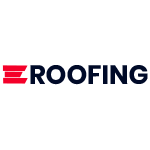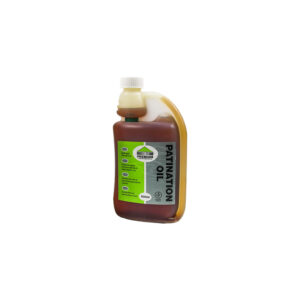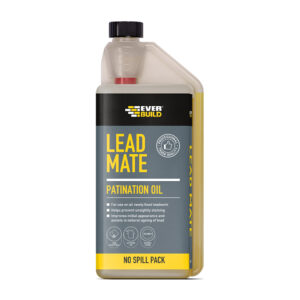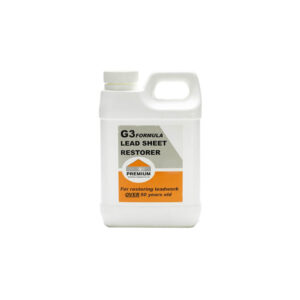Lead flashing is the application of lead over parts of the roof where there is a join to waterproof it. However, newly laid lead itself may need protection from water. Exposure to moist air can cause disfiguring to both the flashing itself and the roof around it. However, there is a solution to this.
The issue is the buildup of lead carbonate. This is caused by a reaction of the surface of the lead with moist air. Lead carbonate is a white, powdery substance. This can get washed down along the flashing onto the surrounding roof by rain. What makes this so dangerous is that lead carbonate used to be a primary component of white lead paint. The wind and rain can end up scrawling unsightly white marks with the lead carbonate over the area directly below the flashing.
What patination oil does is essentially act as an artificial patina over the flashing. All oils are hydrophobic, or water repelling. This patina protects the flashing from water. Patination oil should be applied just after lead is applied. In fact, patination oil should be considered the final part of the application process. Doing it immediately gives no time for lead carbonate to build up.
In addition, since the surface should be dry and free of dirt, leaves and suchlike before applying the oil, doing it immediately saves time overall as well.
How to Clean Lead Flashing
However, you may be trying to deal with lead that has been installed a while ago and requires cleaning beyond just debris. Small white streaks can be eliminated with vinegar or lemon juice, applied with a nylon brush.
If your house has heavier white streaks or other stains and you want to get rid of them, then lead sheet cleaner such as the Premium Lead Sheet Restorer can help. If your lead is over 50 years old you should use G3 grade, if it is 50 years old or less you should use G1 grade. Simply apply with a cloth or nylon scouring pad. This will get your lead looking good as new.
Finally, if your lead has red stains, then copper fixings on your roof may have stained the lead. In this case, the stains can be removed with a high-grade detergent applied with a nylon brush.
Guide to Protecting Lead Flashing – Applying Patination Oil
Once you have ensured the lead is free of grime and moisture, apply the patination oil over the entire surface area of the lead with a soft cloth and using straight strokes. This includes the sides.
Make sure to take care when applying patination oil. It is made using white spirit, which is toxic and which can evaporate at low temperatures. Since lead is also toxic you will need to be careful. You can try to apply a second coat if you wish, for more secure protection. This is especially true in areas with harsh weather conditions.
Guide to Protecting Lead Flashing – Lead Sheet Restorer
There are two approaches when it comes to patination oil. The first is to simply forget about it at all after applying the first coat. By the time the first coat of patination oil has totally eroded the lead beneath should have acquired its own patina to protect it. This will continue to protect it from carbonation.
However, the appearance of patination oil is palatable to many people. It creates a darkened lead colour that is often seen as superior to bare lead. Since lead is notoriously difficult to paint without causing damage, patination oil is one of the few options to safely improve your flashing’s appearance. If you want to maintain this appearance long term, simply reapply patination oil every few years.
Protecting Lead Sheeting
The first is an effect called leaching. This is when a substrate filled with moisture like concrete or wood starts slowly taking tiny amounts of lead and depositing it in the concrete. This is a huge issue because it causes the lead sheeting itself to slowly become fragile as it hollows out.
The other issue is thermal expansion. Almost every substance expands when it is heated and contracts when it is cooled. However, the crucial factor is that substances tend to have different rates of expansion. Metals tend to expand exceptionally fast when they absorb heat. Normally this wouldn’t be a problem. However, when lead sheeting is laid directly on a material with a much lower expansion coefficient, problems arise. The lead will pull on the substrate, causing damage to both.
Using Geotec Felt
The solution to both of these problems is geotextile felt. Also known as geotec felt, this is a material similar to a standard roofing underlay. This material separates the lead and the substrate. This prevents leeching by creating a protective barrier for the lead. It also allows the lead to have a soft surface to expand on, reducing the risk of thermal expansion. As a result, geotec felt helps massively expand the life cycle of your lead sheeting.
On top of this geotec felt allows lead to be lain on uneven surfaces while protecting it. This makes installing lead sheets much less of a hassle. Needle-punched geotec felt like the kind we sell at ERoofing also allows for the passage of air.











